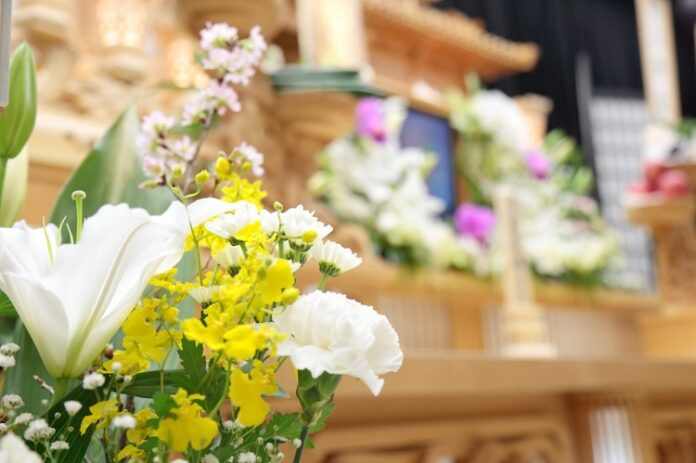Have you started considering your end-of-life plans already?
Many people choose not to consider these things because they’re scary or “morbid.” Death is just a part of life, and it will help you and your loved ones alike if you start planning far ahead of time. You want to be prepared, even if you’re still relatively “young.”
One important consideration is your body disposition method. You have plenty of options to choose from that range in price and conventionality. Choosing this ahead of time will take the stressful decision away from your friends and family members.
But where do you get started? We’re here to talk about it. Keep reading to learn a few disposition methods for your after-death plans.
1. A Traditional Burial
A traditional burial is what most people think of first when it comes to their method of body disposition. Culturally, this is what we see most often in movies and television. For many religions, traditional burial is the only option.
Usually, a traditional burial begins with embalming. During the embalming process, morticians will replace the fluids within the body with preservatives to keep it in good condition for the viewing ceremony. Embalming is not necessary.
If there’s to be a viewing, the mortician will also dress the deceased in a favorite outfit and apply makeup to give them a calm “asleep” appearance.
For the burial itself, the body will be placed in a casket. Caskets are often expensive, so make sure to set aside enough money if this is the method that you’re going to choose.
The body goes into the ground in a standard graveyard or into a mausoleum.
2. Standard Cremation
Cremation is another of the most popular body disposition methods. Many people choose it because it’s often more affordable than a traditional burial and it may or may not be more eco-friendly.
During the standard cremation process, the body goes to a crematorium. There is no embalming unless you choose to do a viewing.
Any jewelry will be removed from the body. A technician will also remove anything that might react with the cremation process, such as medical devices. Metal items remain with the body.
The body goes into a combustible container before it goes into the cremation chamber.
After cremation, loved ones can take home the remains. Most funeral homes will offer a simple container for the “ashes,” but you can upgrade to fancy urns or use any container that you desire.
Potential Uses for Ashes
While many families choose to keep the ashes with them, others have other methods.
Scattering ashes is common. While the legality of scattering ashes is spotty, it’s common to scatter them in the ocean or in the deceased’s favorite place.
Some people choose to use the ashes in a reef or tree burial. This allows the person to become part of the environment. These are newer methods, so they may not always be available.
It’s also possible to turn ashes into jewelry.
3. Aquamation (Alkaline Hydrolysis)
Aquamation is a newer method of disposition (for human use). Many people like it because it’s a more eco-friendly option that doesn’t release harmful chemicals into the environment.
During aquamation, the body goes into an airtight chamber full of an alkaline substance. This allows the body to “dissolve” and return to its basic components. After alkaline hydrolysis is complete, technicians will pulverize the remaining bones and give them to the deceased’s loved ones (as if they were ashes).
Finding a local provider for aquamation can be difficult, but if you have environmental concerns regarding body disposition, this is a great option.
4. Green Burial
Green burials are also getting more popular as more and more people are getting on board the “eco-friendly” train. These burials are also more affordable than traditional burials, while still allowing a traditional funeral and burial service.
For a green burial, the body is not embalmed. Embalming fluid can harm the environment and release dangerous chemicals into the ground surrounding the body.
Instead of a casket, the body goes into an earth-friendly container or cloth. It has to be biodegradable. Because the body itself is organic, it will decompose in the ground and return to nature.
You have the option (though again, this is uncommon and hard to find), to place your body in a pod to go underneath a tree. This is a beautiful gesture.
Green burials aren’t available in all areas. If you plan to be in a cemetery, make sure that you find one that allows green burials.
5. Body Donation
Donating your body to healthcare or science may be the kindest thing that you can do post-death. It is also a free method of body disposition if cost is a concern for you.
When you arrange for a body donation, your body will go to healthcare workers and research facilities so they’re able to learn more about how the body works. This helps them make developments regarding healthcare and treatment options (which means that you can help them save lives).
You can also donate your body to medical schools so you can help educate fledgling doctors.
After several weeks, your family can arrange for cremation. The facility will return your remains at no cost to your loved ones.
Which Body Disposition Method Is Right For You?
It’s never too early to consider which method of body disposition is best for you and your loved ones. By planning ahead, you can start making arrangements, setting aside money, and delegating responsibilities.
While your loved ones can make this decision for you after you pass, it’s best for them if you make it ahead of time. Give them peace of mind so they can use that time to grieve.
For more helpful articles about trending topics, check out the rest of the site.











